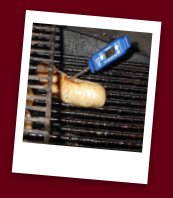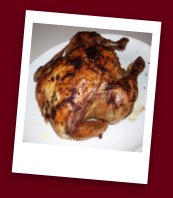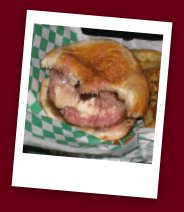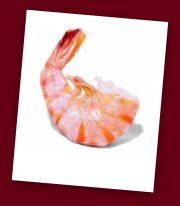|
Cooking Food Safety at Home
There are many different ways to cook foods, and a HUGE variety of foods that can be cooked, but we’re going to stick to basics. If you understand the basic ideas and objectives, you’ll be able to transfer them to all the food you may serve your family. If you have a specific question, shoot it to us! (Click here to do so.)
“Well, it looks done, doesn’t it?”
Using a good, reliable thermometer when important, even for the most accomplished home chef. Especially dealing with poultry (chicken, turkey, duck, and the like), you need to make sure your food reaches its correct internal temperature. We recommend a few cooking thermometers – click here.
To answer that question, we need to consider the product you’re cooking.
Take the temperature always in the thickest part of the food item. If it is a simple chicken breast or strips of chicken that you’re cooking, then stick the thermometer tip (probe) into the thickest part of the chicken. If you are cooking a whole bird (Thanksgiving dinner), check both the breast area AND the joint between the leg and the body of the bird. However, be careful not to take a temperature at the bone – bones may be hotter than meat. Stay in the meat of the bird.
How risky is it to eat undercooked hamburgers? It depends. Some restaurants are allowed to serve hamburgers to order (the way you would order steaks) because they have been approved by the health department to do so. They post all the disclaimer “legal-ese” on their menu and/or on signs in their restaurant, and they either make their own ground beef or have a special grind of beef made for them. If you order a medium rare burger, usually cooked to about 130 °F (54.4 °C), you might be consuming E-coli bacteria. Your body may be able to deal with it, but you take a risk, since the restaurant has warned you (and we are warning you here, too)! At home, it’s completely up to you if you want to take the risk. Bear in mind, however, that if you’re serving anyone in a high risk population group (click here), you could pay for it later.
Steaks, chops and other “whole meat” beef, pork, and other meats are safest when cooked to 145 °F (62.7 °C) – which is a nice medium to medium well, depending on your definition. Again, however, you can choose to order undercooked meats at many restaurants so you can do the same at home if you wish. A rare steak is slightly safer than a rare hamburger, because the germs are generally not INSIDE the meat but on the surface. In addition, even the outside of a rare steak gets much hotter than 145 °F (62.7 °C) because of the searing process. So the germs living on the outside of the steak will probably be killed. At home, you can serve your steaks any way you like ‘em. Again, if you’re serving a high-risk family member or guest, your best bet is to cook your meat to a nice 145 ˚F (62.7 °C).
Any other food you serve hot should be cooked to at least 135 °F (57.2 °C). This could be pasta, fruit, or other food items. Even vegetables should be cooked to the minimum temperature to make sure they are safe to eat.
Well, we purchased the food, we stored the food, we prepared the food, cooking is done, and now we have to learn about leftovers! If you’re thinking you never want the worries of cooking food again, click here to learn what you should know when walking into a restaurant. For a brief history of food safety, click here. To check out Food-Safety-and-You.com's home page, click here.
|
|||





 I heard this the other day from a veteran backyard BBQ chef. He told me he NEVER used a thermometer to check the temperature of chicken as he pulled it off the grill. I pulled out my thermometer (how disturbing that I carry a thermometer to a family BBQ!) and stuck it in the chicken breast; it was a nice balmy 145 °F (62.7 °C), when it should have been 165 °F (71.1 °C). If any Salmonella were on it or in it, they would have been consumed by his friends and family (including me)!
I heard this the other day from a veteran backyard BBQ chef. He told me he NEVER used a thermometer to check the temperature of chicken as he pulled it off the grill. I pulled out my thermometer (how disturbing that I carry a thermometer to a family BBQ!) and stuck it in the chicken breast; it was a nice balmy 145 °F (62.7 °C), when it should have been 165 °F (71.1 °C). If any Salmonella were on it or in it, they would have been consumed by his friends and family (including me)!  Poultry: Chicken, turkey, duck, quail and the like should be cooked to a minimum of 165 °F (71.1 °C). Many commercial restaurants and grocery stores cook poultry to about 180 °F (82.2 °C). This will kill any
Poultry: Chicken, turkey, duck, quail and the like should be cooked to a minimum of 165 °F (71.1 °C). Many commercial restaurants and grocery stores cook poultry to about 180 °F (82.2 °C). This will kill any  Ground meats: Hamburger, sausages, bratwurst, and the like should be cooked to a minimum internal temperature of 155 °F (68.3 °C). The process of grinding the meat actually makes it a riskier product because the
Ground meats: Hamburger, sausages, bratwurst, and the like should be cooked to a minimum internal temperature of 155 °F (68.3 °C). The process of grinding the meat actually makes it a riskier product because the  Seafood such as shrimp, salmon, trout, and octopus is also safest cooked to 145 °F (62.7 °C). With seafood we have to worry not only about germs but also about parasites (in wild seafood). Have you ever used the word “parasite” to describe your neighbor’s cousin’s brother-in-law who won’t get a paying job and lives off his relatives? A parasite is an animal or plant that finds some other living thing – a host – attaches to it, and takes its nutrients from that hapless host. If you consume undercooked or raw seafood that has parasites in it, you may become the host. This makes some people sick to the point of coughing up worms! Cooking your seafood properly kills both the germs and the parasites. Don’t take a chance with seafood; make sure it’s properly cooked to 145 °F (62.7 °C).
Seafood such as shrimp, salmon, trout, and octopus is also safest cooked to 145 °F (62.7 °C). With seafood we have to worry not only about germs but also about parasites (in wild seafood). Have you ever used the word “parasite” to describe your neighbor’s cousin’s brother-in-law who won’t get a paying job and lives off his relatives? A parasite is an animal or plant that finds some other living thing – a host – attaches to it, and takes its nutrients from that hapless host. If you consume undercooked or raw seafood that has parasites in it, you may become the host. This makes some people sick to the point of coughing up worms! Cooking your seafood properly kills both the germs and the parasites. Don’t take a chance with seafood; make sure it’s properly cooked to 145 °F (62.7 °C).  If you make your own sushi (raw fish/seafood dishes) at home, you need to take two precautions to make sure the seafood you use is safe. First, get certified parasite-free ahi (tuna) from your seafood counter (
If you make your own sushi (raw fish/seafood dishes) at home, you need to take two precautions to make sure the seafood you use is safe. First, get certified parasite-free ahi (tuna) from your seafood counter (
